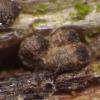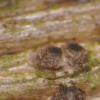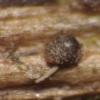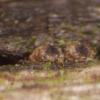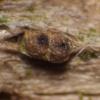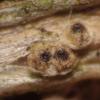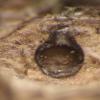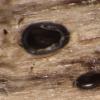
21-12-2025 09:32
Hello.A tiny ascomycete found embedded in wood in

21-12-2025 21:32
Pol DebaenstHello, Garden, Burgweg 19, Veurne, BelgiumOn 10/1

22-12-2025 23:38
Patrice TANCHAUDBonsoir, récolte sur un mur en pierre, apothéci

22-12-2025 00:47
Patrice TANCHAUDBonsoir, récolte à proximité du milieu dunaire

21-12-2025 21:40
Isabelle CharissouBonjour, j'aimerais connaitre les références de

20-12-2025 23:08
Patrice TANCHAUDBonsoir, récolte sur sol sablonneux dans l'arri�
I have got material of two Helicogermslita species (presumably) which are causing me a bit of trouble. We collected the first species repeatedly on branches of Tilia here in the urban area of Graz over the last few years. The combination of mostly uni-peritheciate, clearly immersed stromata with whitish stromatic tissue and one-celled, brown, ellipsoid, symmetrical ascospores with a spiralling germ slit should lead to the genus Helicogermslita. However, the limits to similar genera, mainly Amphirosellinia, are a bit unclear to me. According to the key in Ju et al. (2004; Mycologia 96(6)) Helicogermslita should have superficial stromata which is clearly not the case here. Petrini (2013; Bibl. Mycol. 205) differentiates between those two genera as follows:
Amphirosellinia: "Ascospores asymmetrical, ascus apical plugs with rounded to angular bulge at upper rim, staining blue in iodine"
Helicogermslita: "Ascospores symmetrical, ascus apical plugs with flared upper rim, not staining or lightly blue staining in iodine"
The ascospores of our fungus are symmetrical (-> Helicogermslita) but the apical apparatus stains clearly blue in Melzer's reagent (-> Amphirosellinia). Not sure how to interpret the differences in the form of the apical plugs.
In any case, there are no fitting species in Amphirosellinia whereas Helicogermslita gaudefroyi seems to be a good match for the present collections (Læssøe & Spooner 1993; Kew Bulletin 49(1)). There are a few differences though: the ascospores of our species are broader than the measurments given by Læssøe & Spooner (28.4–38.5 x 19.1–21.7 vs (29)30.4–36(44) x (12)13-15(17) µm) and they have a sheath (Læssøe & Spooner: "no appendages or gel sheath observed"). Also the apical apparatus is very variable in our material and sometimes much larger than described by Læssøe & Spooner (7–10.9 x 5.6–10.2 vs 4.8–5.5 x 6.4-6.8 µm). But maybe the ascospore size of H. gaudefroyi is indeed a bit more variable than reported in literature – Björn Wergen has studied a similar collection from Austria (also on Tilia!) which looks very similar to our fungus but has better fitting ascospore measurements compared to the literature (https://www.sites.google.com/site/funghiparadise/d---ascomycota-sordariomycetes/xylariales/xylariaceae/helicogermslita-gaudefroyi-fabre-laessoee-spooner-1994). He has also observed a gel sheath which simply might have been lacking in the collections studied by Læssøe & Spooner due to the high age of the material.
There are also a few new Helicogermslita species described by Petrini (2003). I wanted to ask if anyone could send me the following paper:
Petrini, L.E. 2003. Rosellinia and related genera in New Zealand. New Zealand Journal of Botany. 41(1): 71–138.
I'm curious if anyone has encountered the presented species before and could share their experience. It seems to be a rarely collected fungus... For microphotos please check the attached PDF.
Best wishes,
Gernot
PS: The macrophotos attached to this post are not mine.
Any comments and ideas are welcome!
Hallo Gernot,
habe den Rosellinia Artikel per email (mit download-link) geschickt. HG Hermann

your overview of the literature probably convinced you that these fungi are poorly known. They are unknown to me too.
According to the current species concepts, the first on Tilia is a Helicogermslita and H. gaudefroyi appears indeed as the best option. I don't think the variations in ascospores dimensions you report are significant, the bigger are the ascospores, the more variable they are, most often.
The one on Quercus is indeed intriguing, based on morphology it has more of a Helicogermslita than of any other genus but without cultural and molecular support it remains a speculation. The habitat you report may be a further lifestyle character of this fungus.
Hope someone will be more helpful!
Cheers,
Jacques
herzlichen Dank!
--
Hi Jacques,
yes, it really seems that these fungi are poorly known. I remember Zotto had a collection once that had somewhat similar ascospores to my find on Quercus (his find was also on Quercus): http://www.ascofrance.fr/search_forum/8957. The macromorphology seems to be different though.
Luckily the material is rather plentiful so it could be useful for further studies.
Best wishes,
Gernot
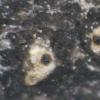
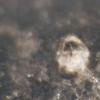
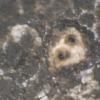
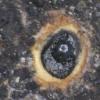
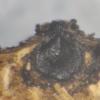
 Helicogermslita-Tilia-0001.pdf
Helicogermslita-Tilia-0001.pdf